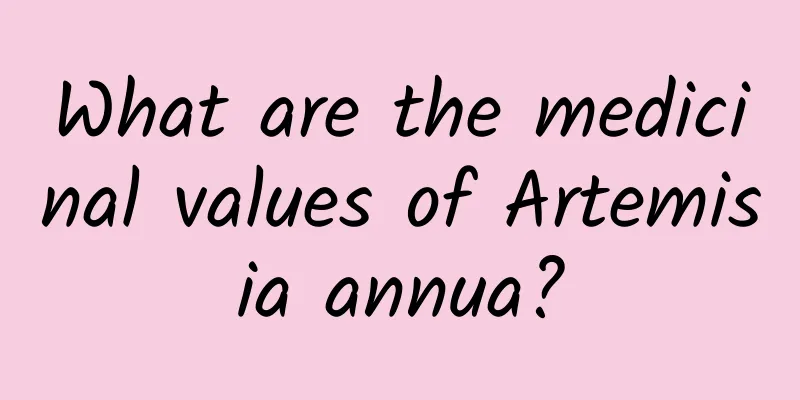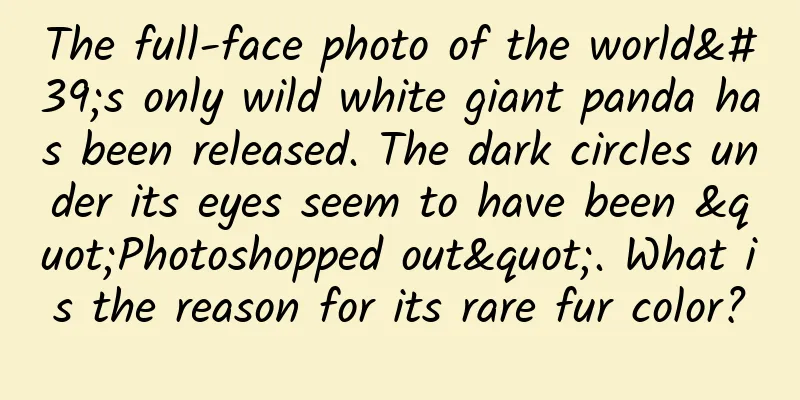What are the medicinal values of Artemisia annua?

|
Although medical technology is constantly developing, most people choose surgery, high-tech equipment, western medicine, and intravenous injections to treat diseases. However, these methods, even if they are high-tech, are not as practical and thorough as traditional Chinese medicine. Some Chinese medicines still grow on common hillsides, such as artemisia annua. This medicine has rich functions and has good effects on various diseases. What is the medicinal value of artemisia annua! [Other names] Stinky wormwood, Artemisia selengensis (Bencao Gangmu), Fragrant silk grass, Wine cake grass (Flora of Guangzhou), Horse urine wormwood, Artemisia absinthium (Guizhou Folk Prescriptions Collection), Yellow fragrant wormwood, Artemisia yellow, Wild tube wormwood (Jiangsu Plant Medicine Records), Chicken lice grass (Jiangxi Herbal Medicine), Autumn wormwood, Fragrant bitter grass, Wild bitter grass (Commonly used Chinese herbal medicines in Shanghai). [Source] The whole herb of Artemisia annua, a plant of the Asteraceae family. Cut in autumn, sun-dried or cut into sections and sun-dried. [Original form] Annual herb, up to 1.5 meters tall, almost glabrous overall. The stem is erect, cylindrical, with shallow longitudinal grooves on the surface. It is green when young and turns yellow when old. The lower part is woody and the upper part is multi-branched. The stems and leaves are alternate; pinnately lobed 3 times, with pointed lobes, green above and yellow-green below, with narrow wings on both sides of the rachis. The leaves on the upper part of the stem gradually become smaller and more finely divided upwards. The inflorescence head is spherical, drooping, arranged in a pyramidal panicle with leaves, almost densely distributed on the upper part of the plant body; each inflorescence head has a short stalk, with or without linear bracts at the base; the involucre is smooth and hairless, with 2 to 3 layers of bracts. The central part of the back is green, with light yellow edges, membranous and transparent; the receptacle is rectangular, the flowers are all tubular, yellow, the outer part is female, with only one pistil; the center is a bisexual flower, the tip of the corolla is 5-lobed There are 5 stamens, anthers fused, short filaments inserted in the middle of the inner surface of the corolla tube, 1 pistil, filiform style, and 2-lobed stigma that is forked. Achenes are ovate, tiny, light brown, with raised longitudinal stripes on the surface. Flowering period is from August to October. The fruiting period is from October to November. [Habitat distribution] Grown in wilderness, hillsides, roadsides and river banks. Distributed almost all over the country. It is produced in most parts of the country. [Properties] The whole plant is dried, about 60 to 100 cm long. The stem is cylindrical, light brown or gray-brown on the surface, with longitudinal ridges, hard, rough broken surface, and white pith in the center. The young branches have many leaves, are brittle and easy to break. The leaves of branches with fruit clusters or inflorescences have mostly fallen off, and only small spherical brown-yellow bracts remain in the inflorescence, which are like fish roe and are brittle and easily broken. It has a unique aroma, bitter taste and a cooling feeling. The best ones are yellow-green in color, fragrant and free of impurities. [Chemical composition] The air-dried plant contains 9.7% water, 5.6% ether soluble matter, 26.6% water soluble matter, 0.8% ethanol soluble matter, 11.6% hemicellulose, 8.5% cellulose, 9.6% lignin, 9.3% protein, 10.1% ash and 2.4% tannins. 【Properties and flavors】 ① "Compendium of Materia Medica": "bitter, cool, non-toxic." 【Functions and indications】 Clears away heat and relieves malaria, dispels wind and relieves itching. Treat heatstroke and malaria. Hot flashes, infantile convulsions, febrile diarrhea, malignant sores and scabies. [Usage and Dosage] For oral use: decoct in water, 1 to 3 qian. For external use: mash and apply. [Additional prescription] ① Treat hot flashes, night sweats and indigestion caused by tuberculosis: 2 to 4 grams of Artemisia annua. Decoction in water. (Guangzhou Army "Handbook of Commonly Used Chinese Herbal Medicines") Artemisia annua is a common Chinese medicine. Compared with many Western medicines nowadays, Artemisia annua is more effective. The paste medicine is very effective in treating night sweats, indigestion, stomach acid, and stomach pain. At the same time, the paste medicine itself can relieve gout, treat malaria, and has a good effect on diarrhea, nausea, vomiting and indigestion in children. |
<<: What are the medicinal values of knotweed?
>>: What are the medicinal values of yew?
Recommend
The height of Mount Everest is affected by it! The latest data shows →
On July 8, the reporter learned from the Second Q...
The efficacy and function of ash leaves
Chinese medicinal materials are very common, and ...
The efficacy and function of Chinese hoof fern
The efficacy and function of the traditional Chin...
Flu ≠ Cold! Here’s how you should deal with the often-ignored flu →
Recently, the topic of influenza has been trendin...
A mother in Shanghai was so angry that she was admitted to the hospital. Is tutoring really that powerful?
What??? Can losing control of your emotions lead ...
Does Dendrobium cause internal heat?
Dendrobium candidum is a very expensive Chinese m...
Expectorant Chinese medicine prescription
Phlegm is a substance formed by protein that atta...
Fruits that taste sour may contain high sugar content? Can people who control their sugar intake still eat them?
When it comes to fruits, many people think of hea...
0 sugar 0 calorie beverage, drink as much as you want without getting fat?
How many calories are in a 500ml bottle of Fat Ho...
The little red fruit "stained with snake saliva" is neither poisonous nor a fruit
As a botanist, the questions I answer most often ...
The efficacy of Liuwei Dihuang Pills
Liuwei Dihuang Pills is a good medicine for nouris...
What does golden thread lotus counteract?
Golden thread vine is commonly produced and culti...
Is it true that breast cancer runs in the family? The truth about genetic screening is...
Common breast cancer genetic-related genes includ...
The efficacy and function of oak
Oak is a kind of traditional Chinese medicine. Th...









